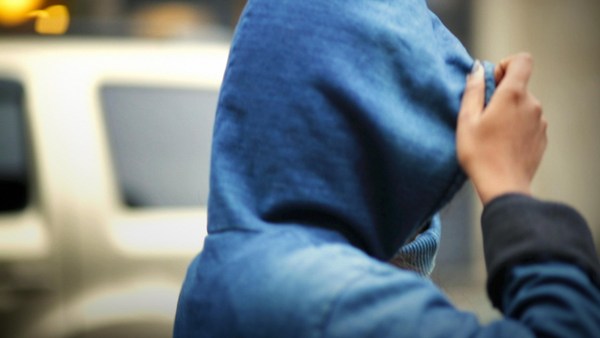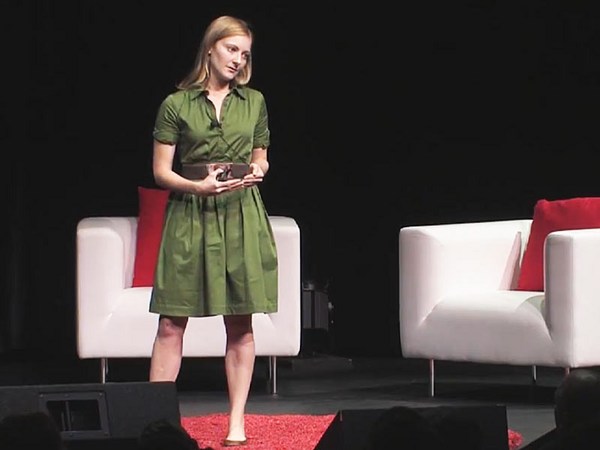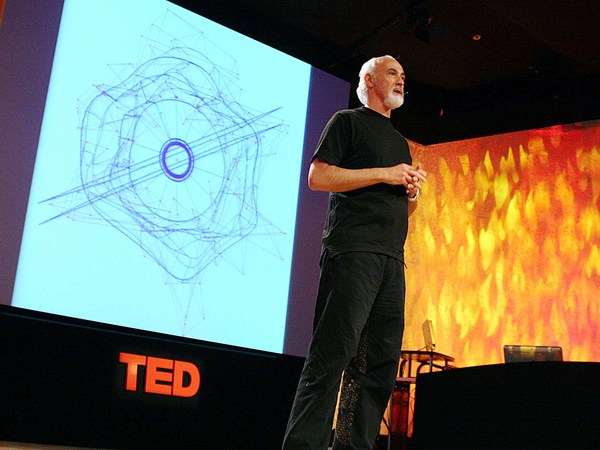The sound is a really big part, I think, of the experience of using a pencil, and it has this really audible scratchiness.
(Scratching)
[Small thing. Big idea.]
[Caroline Weaver on the Pencil]
The pencil is a very simple object. It's made of wood with some layers of paint an eraser and a core, which is made out of graphite, clay and water. Yeah, it took hundreds of people over centuries to come to this design. And it's that long history of collaboration that, to me, makes it a very perfect object.
The story of the pencil starts with graphite. People started finding really useful applications for this new substance. They cut it into small sticks and wrapped it in string or sheepskin or paper and sold it on the streets of London to be used for writing or for drawing or, a lot of times, by farmers and shepherds, who used it to mark their animals. Over in France, Nicolas-Jacques Conté figured out a method of grinding the graphite, mixing it with powdered clay and water to make a paste. From there, this paste was filled into a mold and fired in a kiln, and the result was a really strong graphite core that wasn't breakable, that was smooth, usable -- it was so much better than anything else that existed at the time, and to this day, that's the method that's still used in making pencils.
Meanwhile, over in America, in Concord, Massachusetts, it was Henry David Thoreau who came up with the grading scale for different hardnesses of pencil. It was graded one through four, number two being the ideal hardness for general use. The softer the pencil, the more graphite it had in it, and the darker and smoother the line will be. The firmer the pencil, the more clay it had in it and the lighter and finer it will be.
Originally, when pencils were handmade, they were made round. There was no easy way to make them, and it was the Americans who really mechanized the craft. A lot of people credit Joseph Dixon for being one of the first people to start developing actual machines to do things like cut wood slats, cut grooves into the wood, apply glue to them ... And they figured out it was easier and less wasteful to do a hexagonal pencil, and so that became the standard.
Since the early days of pencils, people have loved that they can be erased. Originally, it was bread crumbs that were used to scratch away pencil marks and later, rubber and pumice. The attached eraser happened in 1858, when American stationer Hymen Lipman patented the first pencil with an attached eraser, which really changed the pencil game. The world's first yellow pencil was the KOH-I-NOOR 1500. KOH-I-NOOR did this crazy thing where they painted this pencil with 14 coats of yellow paint and dipped the end in 14-carat gold.
There is a pencil for everyone, and every pencil has a story. The Blackwing 602 is famous for being used by a lot of writers, especially John Steinbeck and Vladimir Nabokov. And then, you have the Dixon pencil company. They're responsible for the Dixon Ticonderoga. It's an icon, it's what people think of when they think of a pencil and what they think of when they think of school. And the pencil's really a thing that, I think, the average user has never thought twice about, how it's made or why it's made the way it is, because it's just always been that way.
In my opinion, there's nothing that can be done to make the pencil better than it is. It's perfect.





